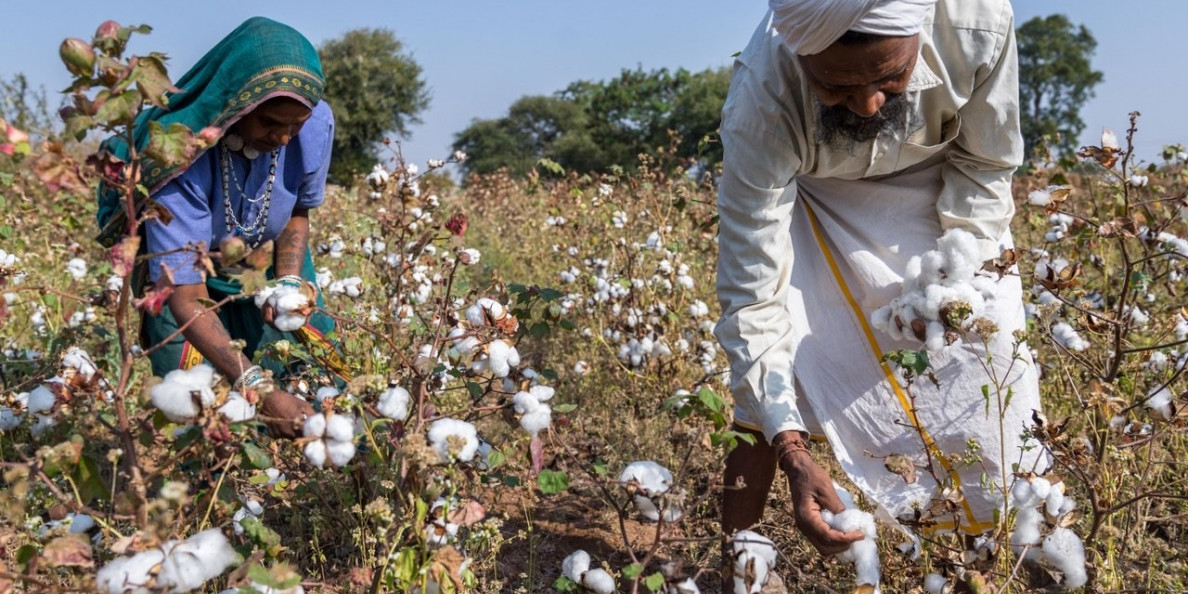In absolute terms, the hike in the minimum support price (MSP) of cotton for the kharif 2018 season was 2.5 times that of soybean.
In absolute terms, the hike in the minimum support price (MSP) of cotton for the kharif 2018 season was 2.5 times that of soybean but farmers in key states appear to have migrated to the oilseed, finding it potentially more remunerative in case the announced MSP is really implemented.
On an all-India basis, the area under cotton was 4% lower at 109.8 lakh hectares as on August 3 compared with what it was at the same time last year; soybean acreage, on the other hand, was about 11% higher than last year at 109.5 lakh hectares.

The trend is almost uniform in all key states where the two crops compete, including Maharashtra, Gujarat and Madhya Pradesh, and could hit India’s exports of cotton in 2018-19.
At the all-India average cotton yield of 464kg per hectare, a farmer could ern Rs 23,896 per hectare from cultivating the natural fibre in the case of which the MSP operations have traditionally been effective.
The promise of purchase of the produce at the MSP of Rs 3,399 a quintal would mean a farmer could get Rs 25,098 a hectare by cultivating the oilseed, given its yield of 738 kg per hectare.
With 36.5 million bales (of 170kg each) of cotton production estimated for 2017-18 crop year (July-June), the export of the fibre crop may increase to 7 million bales in the current marketing year (October-September) from 5.8 million bales in the previous year, Cotton Association of India said last month. However, any fall in cotton production in 2018-19 crop year (July-June), may lower exports from India next year even as traders were expecting to cash in on the US-China trade war after China levied additional a 25% import duty on US cotton.
“Since soybean and cotton are competing crops in the kharif season, farmers will obviously prefer the one which will give them higher returns,” said DN Pathak, executive director of Indore-based Soybean Processors’ Association (SOPA). Besides MSPs, the weather too influences selection of the crop.
According to Pathak, SOPA is helping farmers by making available better varieties of seeds and guiding them with on how to improve productivity.
The rainfall deficit in all of Gujarat, the largest producer of cotton, was over 11% until August 3 while the key Saurashtra region has received only 80% of the normal rainfall. This has resulted in a fall in the sowing area to 25.5 lakh hectares in the state until last week from 26.4 lakh hectares in the year-ago period. “Even if the sowing area increase in the coming days from the current level, the delay in getting rains for a long period in July due to the stalled monsoon will reduce cotton yield,” a Rajkot-based trader said. Until July 12, the rainfall deficit in the Saurashtra and Kutch regions was about 70%. But the subsequent heavy rains in the region reduced the deficit to 39% in three days.
Maharashtra has received surplus rains in the Vidarbha region and it was 4% above normal until Friday. This may help cotton growers in the region, infamous for farmer suicides, increase the yield. However, the overall cotton acreage in the state has been marginally lower at 38.7 lakh hectares as of August 3 from 39.4 lakh hectares in the year-ago period.
“We are very careful about cotton crop this time as last year we could not react in time,” Maharashtra’s additional chief secretary Vijay Kumar told FE. Cotton crops were damaged due to pink bollworm attack last year. “We have deployed 14,000 personnel to keep a watch on the cotton crop as against a few hundreds last year. Any report of pest attack from anywhere will be attended to immediately,” Kumar said.
In sync with the new policy to fix the minimum support prices of crops at 150% of the cost of production (A2+FL), the MSP of cotton (medium staple) was hiked to Rs 5,150 per quintal and that of soybean to Rs 3,399 per quintal for the 2018-19 season.
-Prabhudatta Mishra


